What Are the Parts of an Air Conditioner?
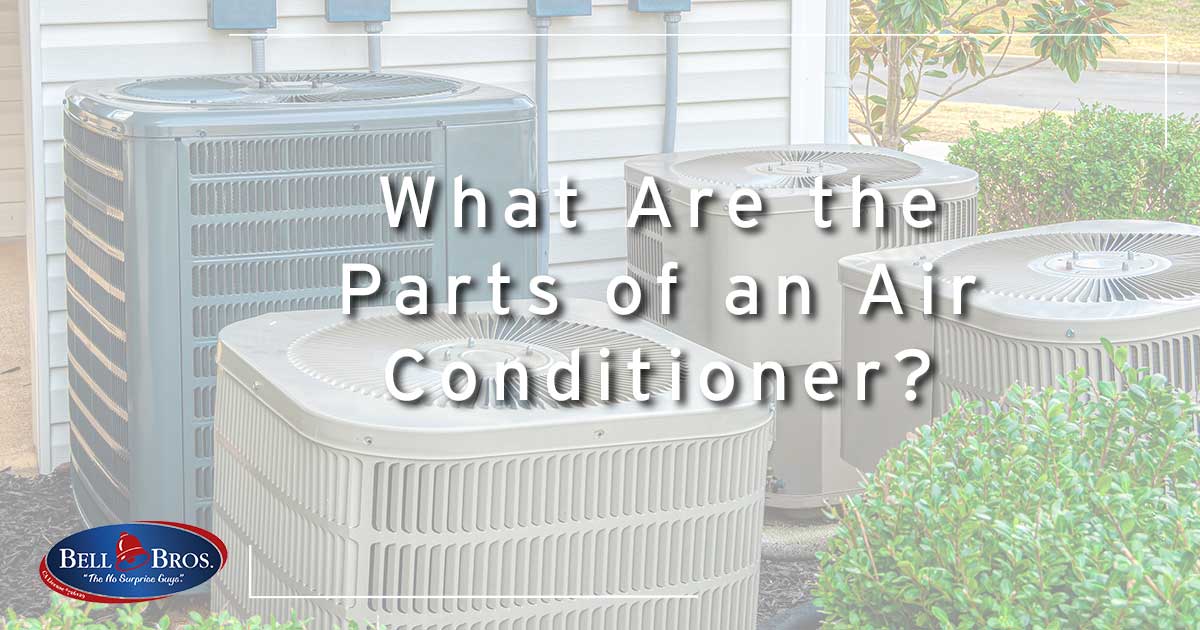
If there’s anything we can agree on, it’s that the summer can be unbearably hot. No matter where you are—Sacramento, the Central Valley, or the Bay Area—the summer is hot, and it is long. During this time, it’s a bit too easy for our homeowners to take their HVAC system for granted.
While it may be easy to sit back and just think of the air conditioner as the big outdoor fan that turns on and off, it’s actually much more complicated than that. Your air conditioner is a complex machine with a number of parts necessary for your comfort and safety. For those who want to take a deeper dive, here are the parts of an air conditioner and what they do.
Central air conditioning systems are made of two major parts. The condenser, which lives outside, and the furnace that lives inside. Yearly tune-ups for your system are critical. For example, your furnace is used for both summer and winter.
Parts of an Air Conditioner: The Indoor Unit
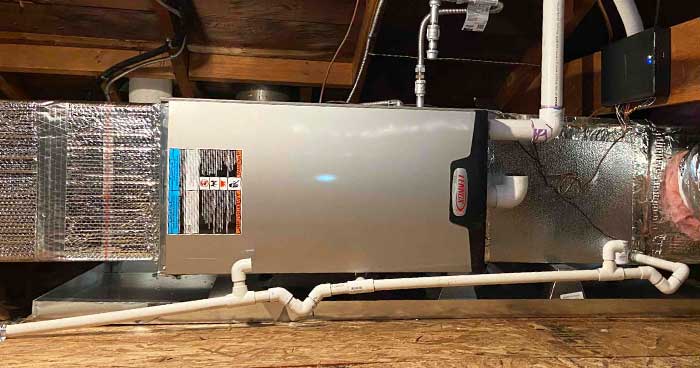
When it comes to central air, your furnace is the yearlong MVP. Though the word furnace is synonymous with winter and heating. This piece of machinery plays a huge role in the cooling process.
At Bell Brothers, we’ve explained how the parts of the furnace work for heating. Today, we’re explaining how they work for cooling.
Thermostat
Just as you use a remote control to turn on the tv, you use a thermostat to turn on the AC. When the thermostat is out of order, you can ensure your air system won’t be working well.
Evaporator Coil
The evaporator coil is the whole reason your system can even produce cool air. However, before we get into that, we need to tell you about refrigerant. This “working fluid” is what pulls heat and humidity out of ambient air. It’s the reason your home has any cool air at all.
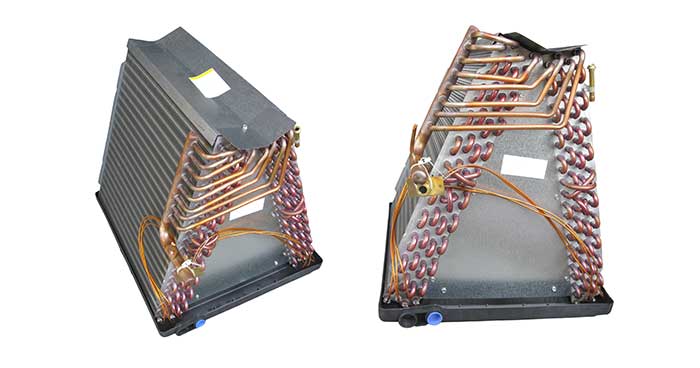
Refrigerant starts in the outdoor condenser where it is then pumped inside to the evaporator coil. This coil cools the refrigerant so much that it becomes a gas. This gas absorbs any heat from the air and sends that heat back outside.
Your HVAC system is constantly recycling air. It pulls in warm air that’s already inside your home. That air is pushed over the evaporator coil where the refrigerant cools it. Then, with the help of the blower, the now cool air can be distributed through your home.
Expansion Valve
The expansion valve plays a key role in how much refrigerant is allowed into the evaporator coil.
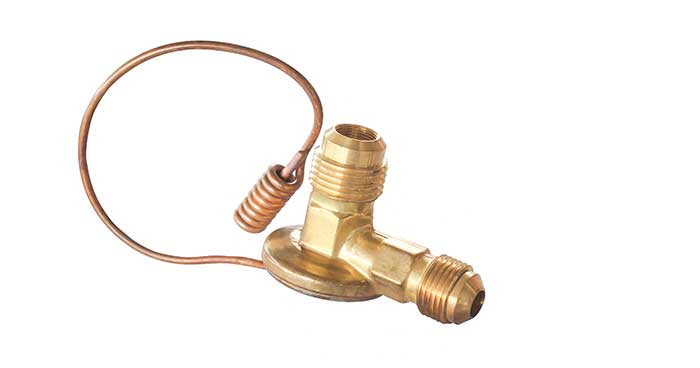
Located in the refrigerant line itself, the expansion valve controls how much refrigerant is released into the coil. This little tool allows the system to work at peak efficiency.
If the evaporator coil were to get too much refrigerant, that refrigerant would collect at the bottom of the input line and essentially be wasted. On the other hand, if the coil were to receive not enough refrigerant, the whole system is forced to work harder to produce the same amount of air.
Just like the tale of goldilocks and her three bears, the expansion valve makes sure the coil receives just the right amount of refrigerant.
Blower
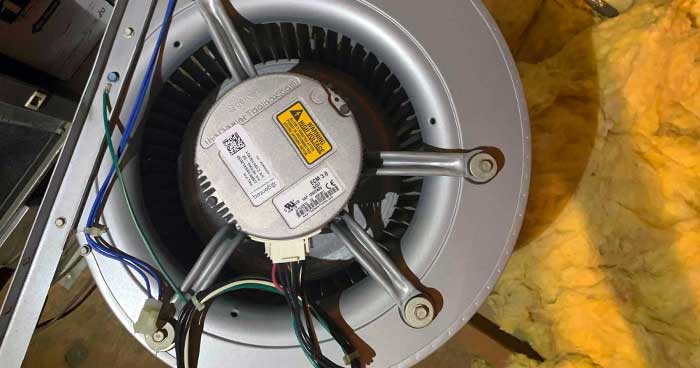
All the air that gets pulled into your HVAC system needs to go somewhere, and this is where the blower comes into play. The blower pushes air over the evaporator coil and into your ductwork to then be distributed throughout the home.
Blower Motor
In order to do its job, the blower needs a motor. The blower motor ensures the blower fan is evenly rotating and sending treated air into your home.
Filter
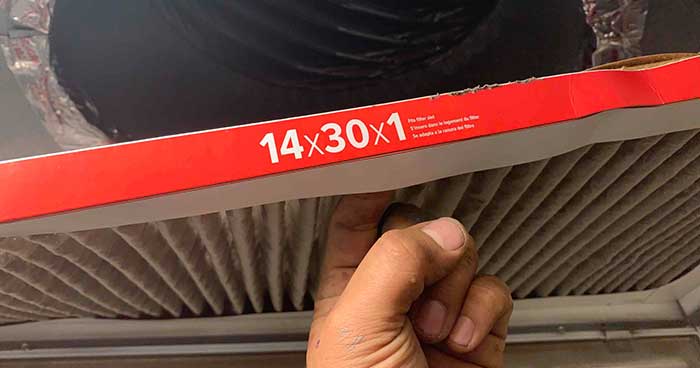
One of the most important parts of your entire HVAC system is the air filter. At Bell Brothers, we recommend changing your air filter every three months or at least once in the spring before AC season and once in the fall before furnace season.
Routine maintenance for your air filter is crucial because this little filter has two big jobs. First, it keeps dust and other debris from getting into your HVAC system. When a system is too dusty, it can hinder airflow.
An air filter’s second job is to pull contaminants from any treated air. Most air filters can grab dust, dander, and other larger particles. Some filters are so strong they can reduce the number of bacterial and viral particles in the air. It all depends on the type of filter you buy.
Ductwork
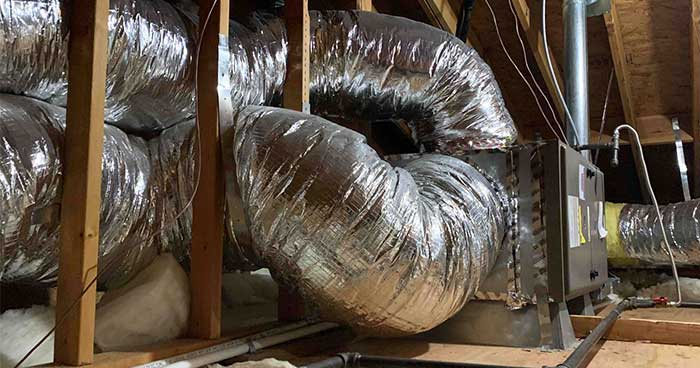
All the treated air in your home needs to be guided. Ducts, or ductwork, is the highway for your air. Made of flexible metal tubing, ducts carry treated air from your HVAC system to the rest of your home.
Ducts can be found in your attic, the walls, and even under the house. They connect to the air vents on your walls.
Damper
The air that comes from your HVAC system needs to know where to go. It can go through the ductwork, but where does that direction come from? This is where the damper comes in.
The damper is air traffic control for your HVAC system. It tells how much air to go where and when. Without dampers, your home couldn’t be evenly cooled.
Supply and Return vents
As we mentioned above, all the air in your home is recycled. All central air systems have entry and exit points called the supply and return vents.
Supply vents send treated air into the home while return vents bring air from the home back into the HVAC system to be temperature treated.
Parts of an Air Conditioner: Outdoor Unit
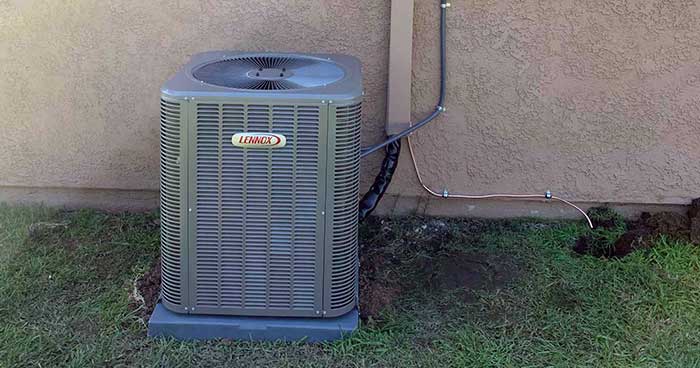
Now that we’ve gone over what parts of the furnace are used for the cooling process, it’s time to step outside. Your outdoor unit is called a condenser and it is made up of 4 essential parts.
Condenser Coil
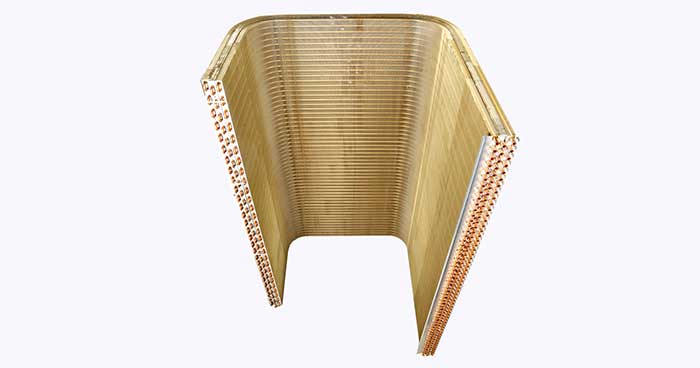
If the evaporator coil is what pulls heat and humidity from the air, the condenser coil is its opposite. The condenser coil takes that heat and releases it back into the outside atmosphere.
When refrigerant finds its way back to the condenser, it makes the condenser coils very hot. This starts the heat transfer process. Heat will stay on a surface until it finds something cooler to transfer to.
When the heat in the refrigerant comes back to the condenser, the condenser coils are so warm the heat transfers to the coil, then is released outside.
Fan
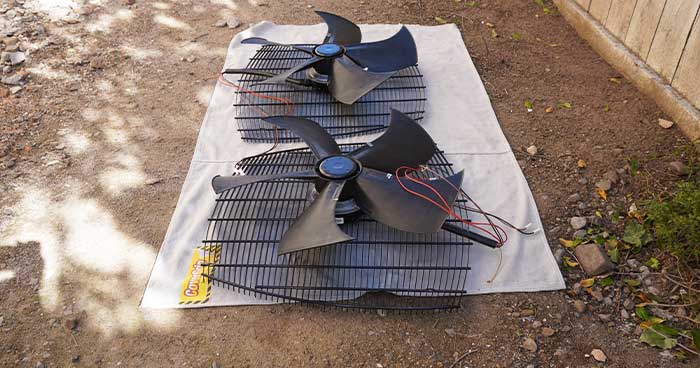
The coil can pull the heat from the refrigerant, but without the fan, the hot air would have nowhere to go.
A condenser’s fan is constantly moving heat away from the condenser. This helps ready the condenser to pull more heat from the refrigerant and helps keep the unit from overheating.
Compressor
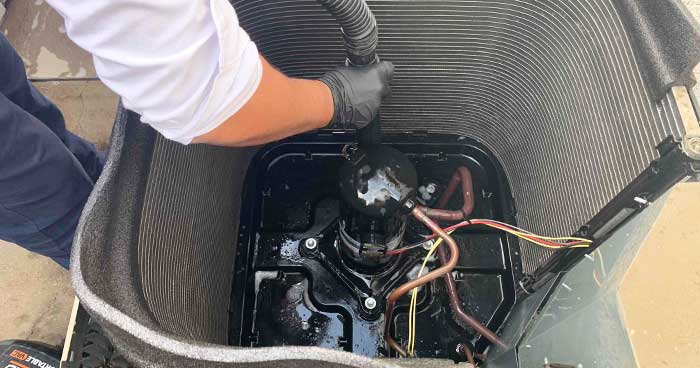
We’ve explained that refrigerant moves from the furnace to the condenser, but we never touched on how. Refrigerant is able to move within the compressor. The compressor helps move refrigerant though the HVAC system and converts the refrigerant from hot to cold.
Refrigerant is first sent to the evaporator coil. There it gets so cold that it pulls all the heat and humidity from ambient air. During this process, the refrigerant turns to a gas.
The compressor pulls the refrigerant back to the condenser, compresses it back into a liquid and sends any heat it captured out through the condenser coil.
Refrigerant Line
The refrigerant needs somewhere to go! The refrigerant line directs it from the condenser, into the furnace, and back again.
Know When It’s Time to Call for Help.
Now that you know the parts of an air conditioner, it’s important to know when to call in the experts. There are a few things you can do on your own, like changing the air filter. But when it comes to something like strange sounds or odd odors, it’s best to call your local HVAC specialist, Bell Brothers.

